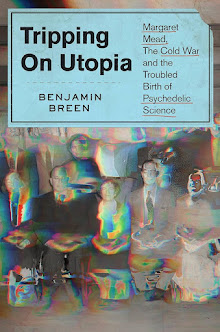Below are some vivid paintings and engravings of enslaved peoples in the colonial Americas compiled by Professor Jerome S. Handler (his
personal site) and Michael L. Tuite, Jr. in a joint project funded by the University of Virginia and the
Virginia Foundation for the Humanities. Contextual details for these images are scarce, but the pictures themselves speak eloquently of the manner in which the institution of slavery was embedded into the fabric of life in colonial societies stretching from Boston to Buenos Aires. I've added occasional captions to the images, but where the text is in quotes it comes direct from the online database assembled by Handler and Tuite, entitled
The Atlantic Slave Trade and Slave Life in the Americas. Many thanks for this fantastic resource.
 |
| Extracting a jigger, scene in the Brazils. Watercolor by Augustus Earle (1793-1838). Original in National Library of Australia, Canberra. "Shows a black woman extracting a chigger from the foot of a white man in what appears to be some sort of tavern; note pottery jug in left-hand corner. A tropical flea native to the Americas, the chigger (jigger, chigoe) was extremely troublesome to Europeans and Africans in many areas of the New World." William Dampier, the famed pirate and natural observer, recorded a similar removal of a chigger from his foot by an African slave in the 1690s, which he noted was accompanied by the sprinkling of tobacco leaves and the slave "mumbling some words to himself." See Dampier, A Voyage to New Holland, Vol. II, 93. |
 |
| West India Washer Women, a painting by Agustino Brunias, 1760s. Courtesy of the National Library of Jamaica, Kingston. Brunias, "a painter born in Italy in 1730, came to England in 1758 where he became acquainted with William Young. Young had been appointed to a high governmental post in West Indian territories acquired by Britain from France, and in late 1764 Brunias accompanied Young to the Caribbean as his personal artist." |
 |
| "Ile de France: Palanquin." Engraving from Louis de Freycinet, Voyage Autour du Monde... Atlas Historique. Plate 10. The Atlas Historique, a book of lavishly colored engravings documenting a French geographical expedition in the 1810s, offers a goldmine of information about enslaved peoples to historians. This image differs a bit from others I've seen from the Atlas in that it depicts daily life in Mauritius, an island near Madagascar in the Indian Ocean, as opposed to the Americas. Note the barber-surgeon at right, an important medical practitioner among enslaved and free black populations throughout the colonial era. |
 |
| An archival image of a mulatto house slave of Peru, 1780s. "This and hundreds of other drawings were done by unidentifed Indians during the 1780s and were commissioned by the Spanish Bishop Baltazar Jaime Martinez Companon during his pastoral visit to the region of Trujillo in northern Peru. The drawings, spread over nine volumes, are of Spaniards, Indians, plants and animals, as well plans and maps of the region." Source: Biblioteca del Palacio Real de Madrid. |
 |
| A companion image from the same series, depicting a mulatta woman. |
 |
Painting by an unknown artist; from post card issued by the Virginia Museum of Fine
Arts, Richmond. "Unidentified black nurse with grandchildren of Virginia's Governor Spotswood, 1790-1800." |
 |
| Collectible cards were often issued by British tobacconists - many featured depictions of African slaves smoking. This one was issued in Devon, England, and is courtesy of the Abby Aldrich Rockefeller Folk Art Museum, Colonial Williamsburg Foundation, Williamsburg, Virginia; image C1980-866. |
 |
| And finally, an evocative scene devoid of people, but with some vivid details of daily life in a colonial Jamaican village: "Watercolor, showing rural house yard. Drawn from life by William Berryman, an English artist who lived in Jamaica for eight years in the early 19th century. He produced over 300 pencil and watercolor drawings of the island's people, landscape, settlements, and flora, with the intention of producing a series of engravings--never realized because of his death." Source: Library of Congress, Prints and Photographs. |
Taken together, the images from this site can tell you things that books never can. I recommend that interested readers peruse it themselves. Below are links to some subject areas:














No comments:
Post a Comment